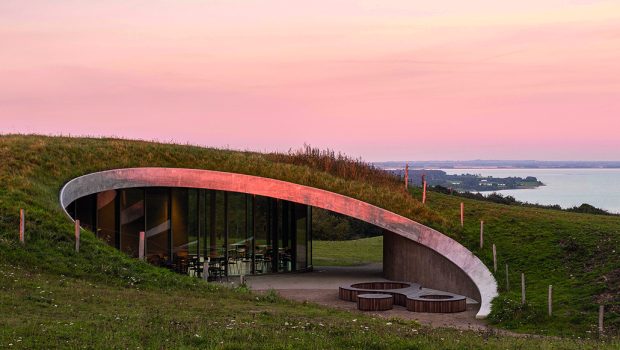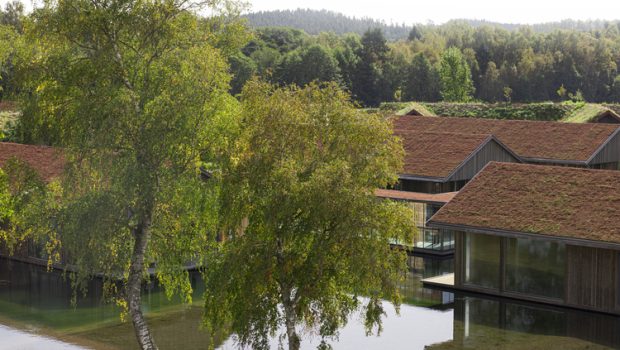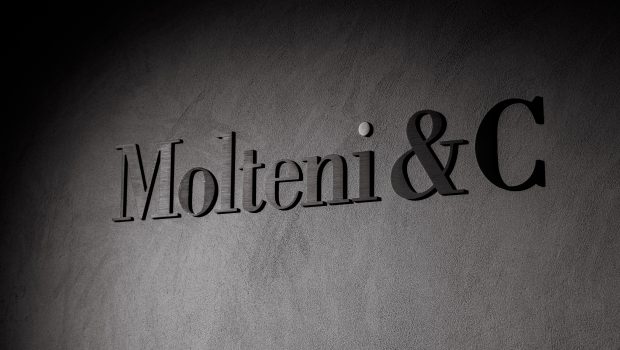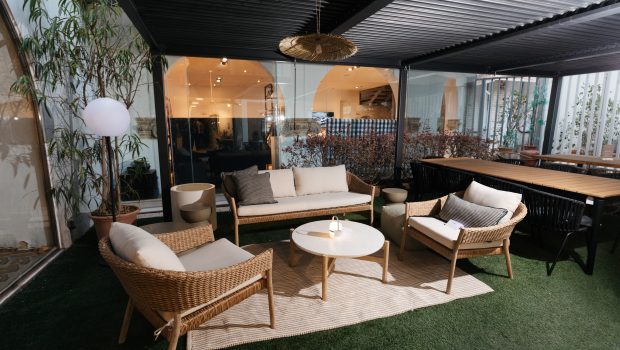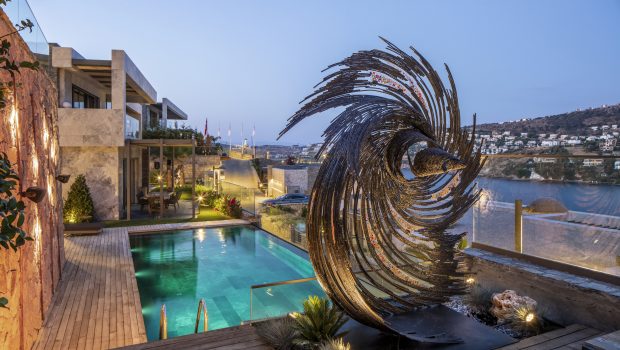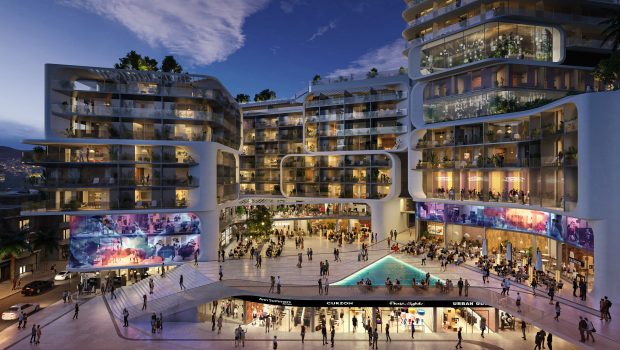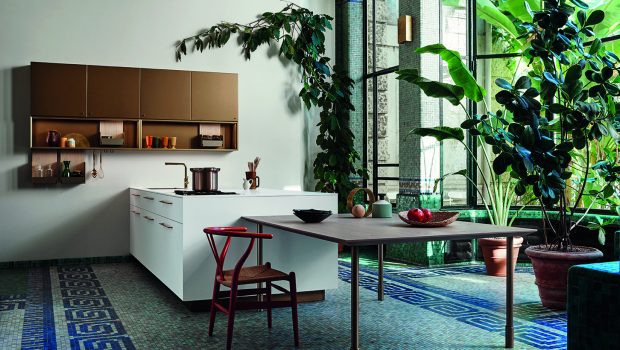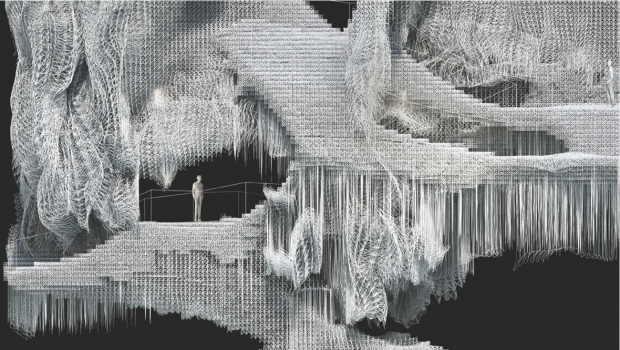Lineso
A new landmark in Dubai reimagines beachfront living with restraint, light, and sculptural clarity
Dubai, UAE – 13 May 2025
On the outer crescent of Palm Jumeirah, a new villa by E Plus A Atelier takes its place between water and sky with an assurance that is both monumental and restrained. The Dubai-based practice, founded by [name], has developed a reputation for clarity of line, exacting detail, and an almost painterly approach to materials. Here, those qualities converge in a house that feels as much installation as dwelling, a space where architecture becomes choreography, and daily life is elevated into atmosphere.
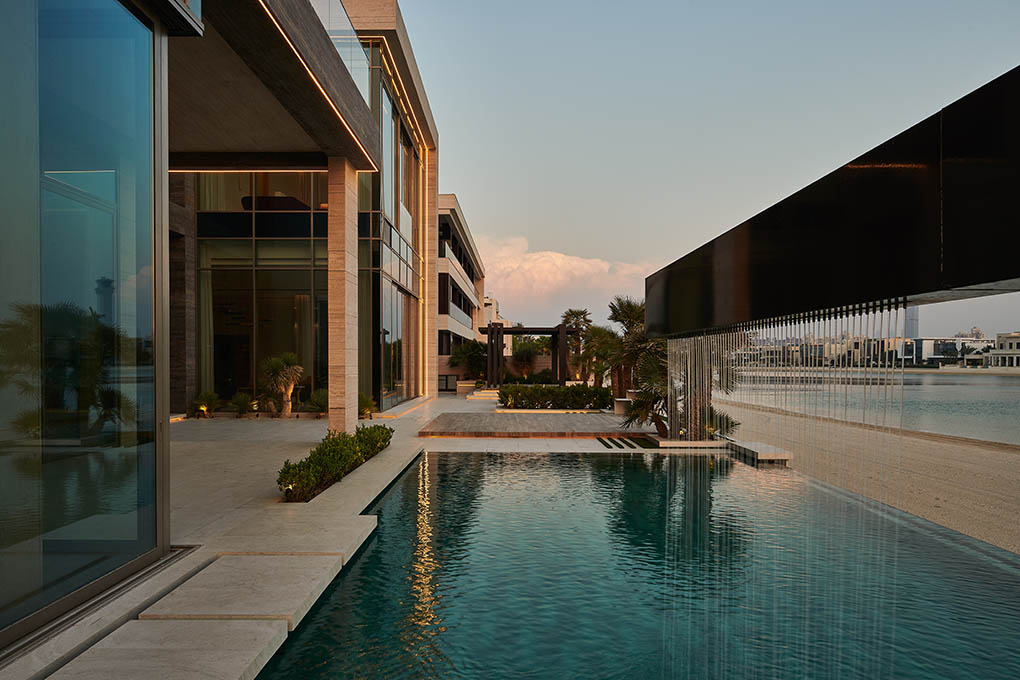
From the street, the house reads as a composition of weight and light. Broad planes of travertine interlock with walls of stone, their mass offset by fine seams of illumination cut into the surface like incisions. The overhangs are deep, the reveals emphatic, giving the architecture a permanence rare on the Palm. Yet a single gesture, a cantilevered beam that releases a veil of water into a turquoise pool, lightens the mass, offering a prelude to what lies within: a language of minimal means used for maximum effect.
Entry is less arrival than procession. The villa is organised not as a floor plan but as a sequence, unfolding one space at a time. At its heart, a triple-height atrium draws the eye upward, binding the levels around a sculptural stair and a glass lift that gleams like a vertical spine. Light floods in from clerestories and skylights above, cascading down timber fins and polished stone.
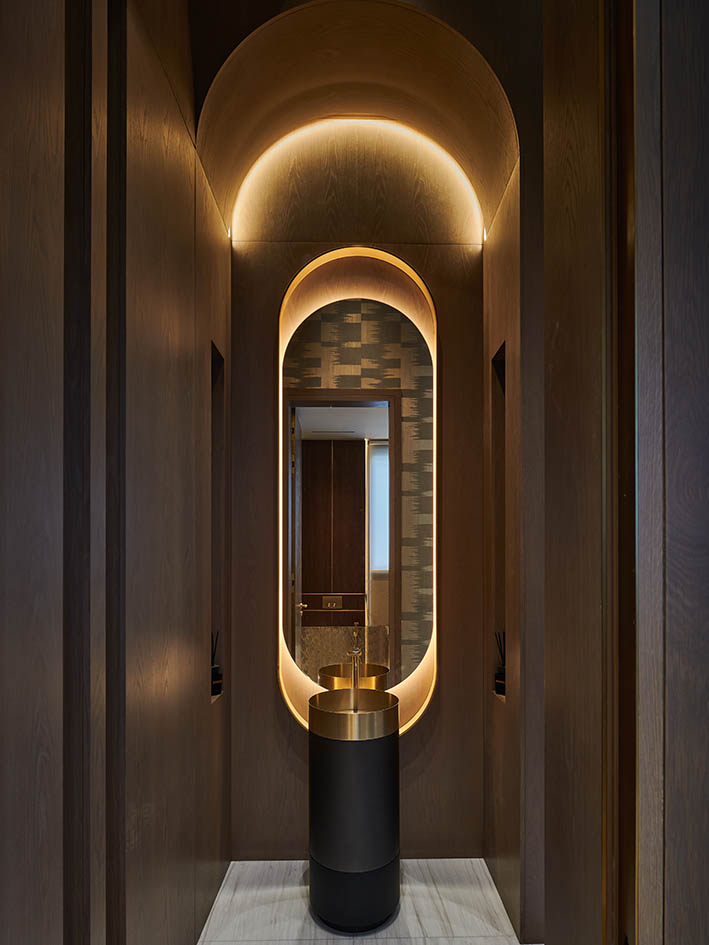
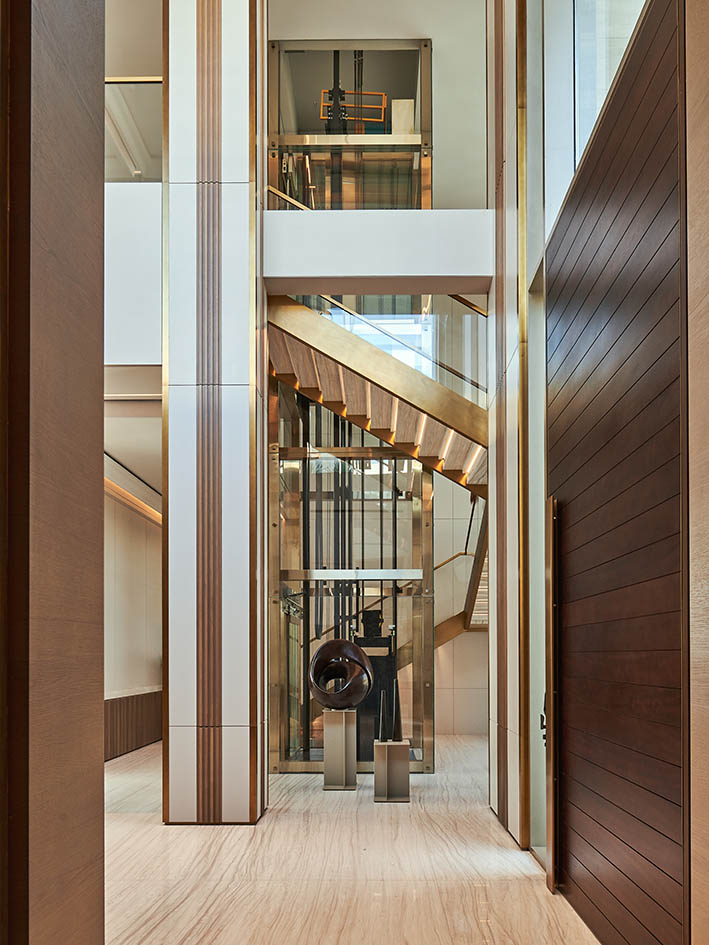
The effect is operatic yet measured, a stage where everyday movement, ascending, descending, pausing, becomes a performance in light and shadow. Other spaces reveal themselves in contrast. The dining hall is double in height, softened by the vertical rhythm of timber louvres. Suspended above, a kinetic artwork adds a sense of gentle motion, its play of balance countering the mass of the surrounding stone. Beyond, the kitchen, a composition of walnut and marble, opens directly onto the garden. Here the geometry dissolves into the horizon, with the infinity pool extending toward the shoreline so seamlessly it appears to merge with the Gulf itself. Light is the architecture’s most carefully handled material.
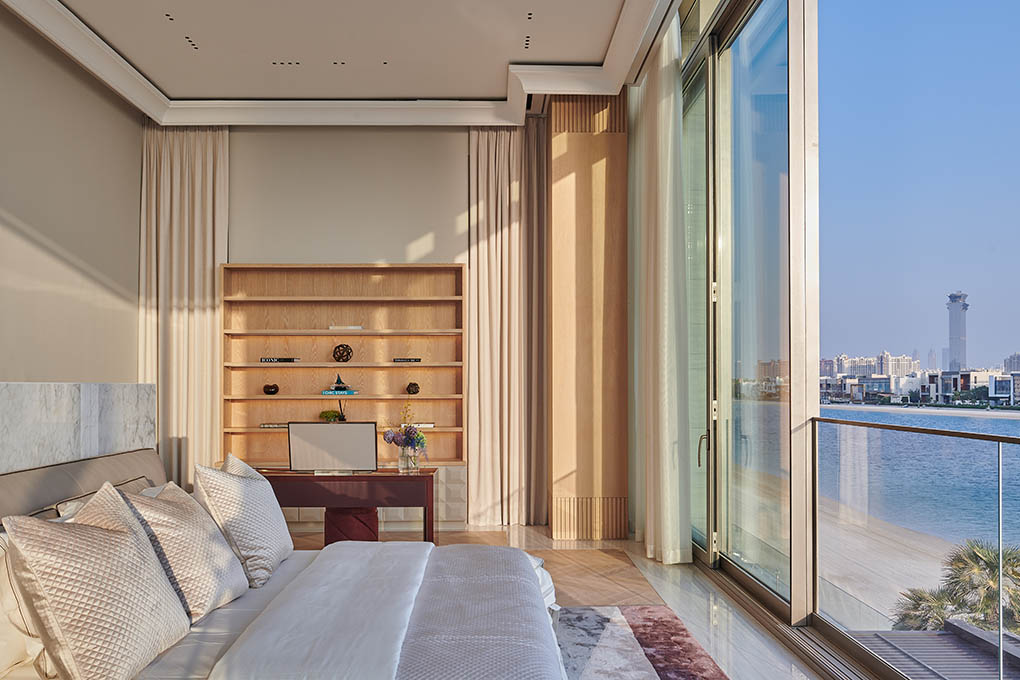
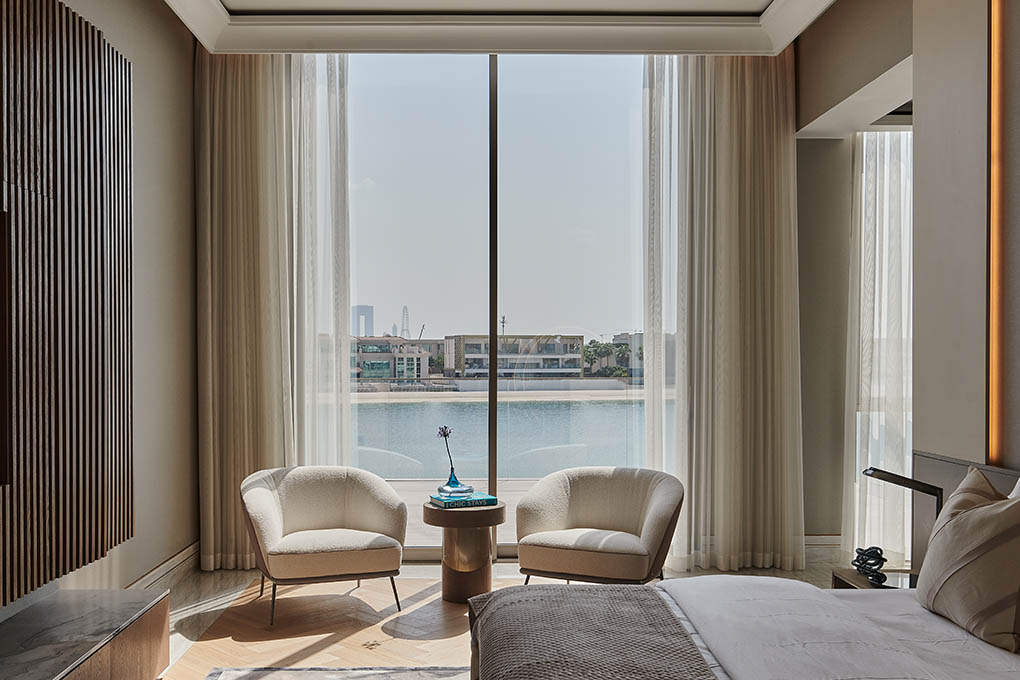
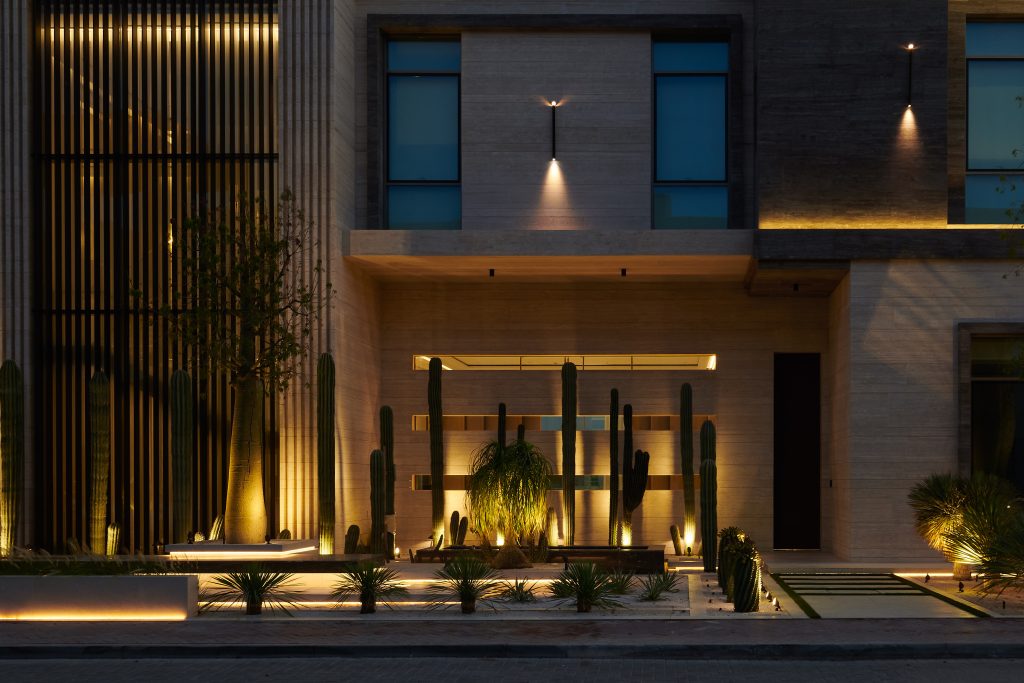
By day, it is directed, filtered, and grazed across surfaces; by night, the villa transforms into a glowing vessel. Passages and corridors, too often overlooked, are given particular intensity. Arched niches are haloed with light, turning transitional spaces into miniature galleries. Vaults and recesses reveal a concern not just with utility but with experience. Nothing is incidental. The palette is rich but never indulgent. Bronze glints against oak; travertine carries from exterior to interior in uninterrupted sheets; lacquered panels reflect softened illumination. Every junction, seam, and reveal has been worked to precision. Bathrooms become meditations in stone and water, their freestanding tubs placed as sculptural objects beneath indirect light. Even the smallest powder rooms are conceived as set pieces, where basins and mirrors appear as installations of form and finish.
The private quarters take on a different character. Where the public rooms dramatise scale, the bedrooms lean toward intimacy. Walls are wrapped in timber and fabric, softening acoustics and touch. Colours shift to muted warmth; surfaces invite rather than impress. Here, the architecture withdraws into discretion, offering sanctuary rather than spectacle.
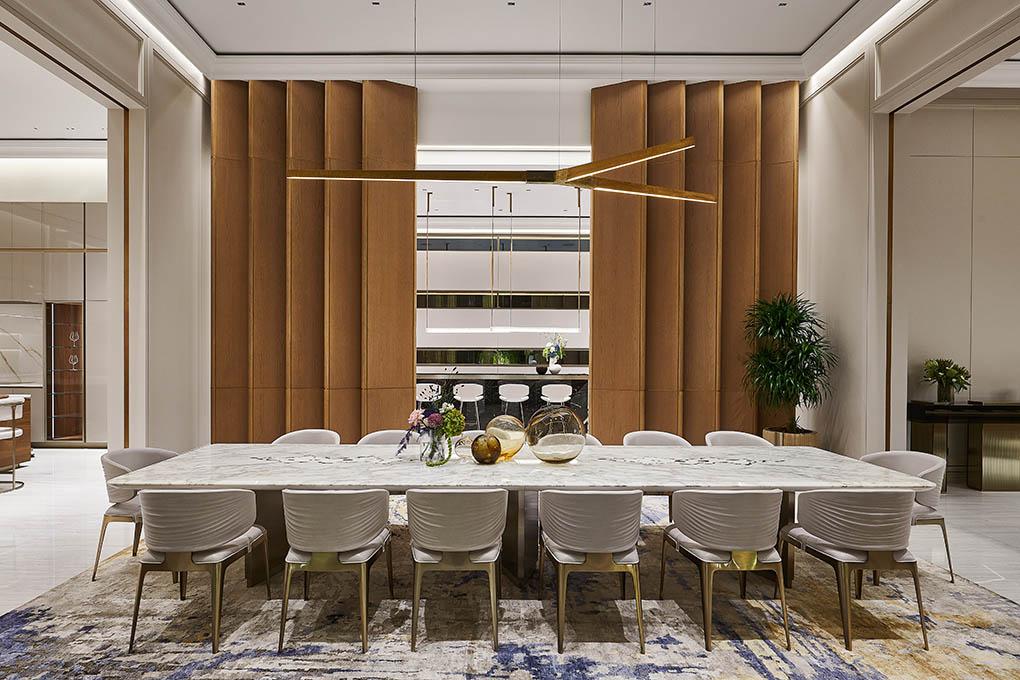
Landscape design extends the building’s geometry outward. Plantings of palm, cactus, and baobab are placed with sculptural intent, punctuating views while preserving privacy. Raised planters and stone paths continue the travertine grid into the garden, merging built and natural with subtle continuity. The garden, like the architecture, is not ornamental but structural: a living extension of form. What distinguishes the villa is its rejection of excess. On Palm Jumeirah, a context often associated with flamboyance, it speaks in a quieter, more deliberate tone. Its drama comes not from showmanship but from atmosphere.
Every space feels tuned, as though calibrated to hold a precise balance of light, texture, and proportion. Luxury here is not defined by what is added, but by what is refined. Of course, such precision invites tension. A house so carefully composed risks perfection at the expense of spontaneity. Yet this is also its strength: the insistence that domestic life can be heightened by architecture, that the rituals of walking a corridor, dining at a table, or bathing in stone can be transformed into experiences of resonance. The villa is not a backdrop for life; it is a stage where life and design are inseparable. For E Plus A Atelier, established only in 2019 and already building across the UAE, Europe, Asia, and Africa, the project signals a confident evolution. It demonstrates that Dubai’s architecture can move beyond spectacle and into a more considered modernism, one that values restraint as much as scale, tactility as much as technology, permanence as much as novelty.


